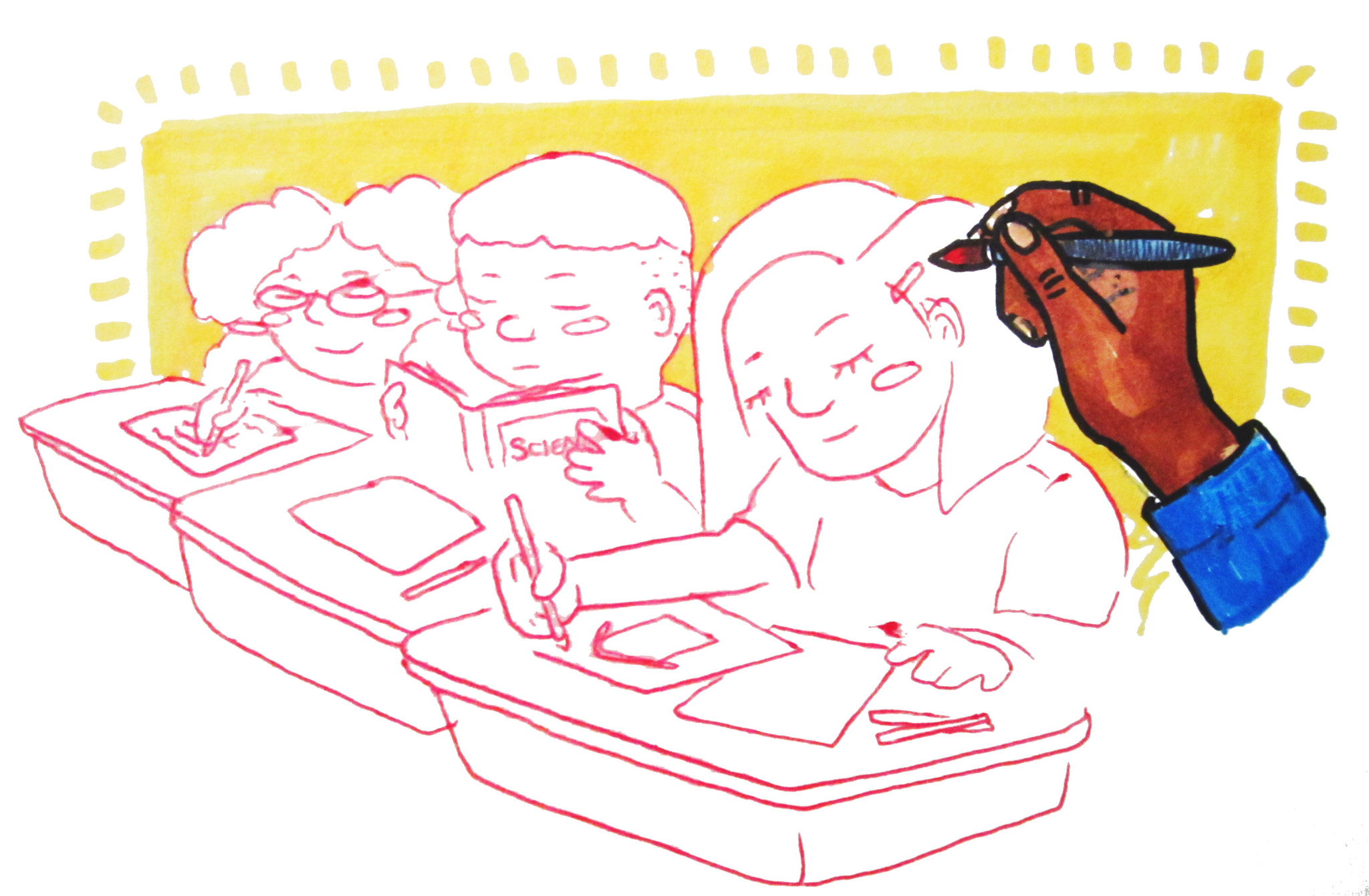Rarely does the American public school system treat the arts with as much respect as it treats the “core” subjects of math, English, social studies, and science. When it comes time to slash budgets—something that seems like a regular occurrence nowadays—the arts programs are usually the first ones to go. The Chicago public school system has not been immune from these financial constraints, and the notion that the arts are dispensable has informed much fiscal policy. However, thanks to landmark legislation in 2012, the CPS board incorporated the arts as a core subject in schools, thereby cementing its importance to the Chicago public school system.
First approved by the school board in 2012, the city’s Arts Education Program was a comprehensive overhaul of the visual, theatrical, and musical arts in public schools (including magnet schools). The AEP’s main component consists of increasing the amount of weekly arts instruction to 120 minutes for all students. Other aspects of the plan include more types of art classes being made available, greater graduation requirements for art courses, and minimum staffing ratios of one art teacher to 350 or fewer students. The Chicago public schools’ new education strategy also involves the unique Arts Liaison program, in which an individual is charged with creating and sourcing opportunities for students to become more involved with local artists and reaching out to the school community to ensure that the students’ needs are best met. The art liaisons also communicate with other public schools to come up with the best division of resources. Not only do the liaisons benefit the schools in which they work, but also the greater Chicago community. The program gives local artists exposure to a wider audience, and potentially allows them to inspire more kids in ways that would be otherwise impossible.
One organization deeply involved with the Arts Liaison aspect of the program is Chicago Arts Partnership in Education, which matches local teaching artists with teachers from public schools around the city. The group provides upwards of thirty hours of education instruction for the pairs on how to best incorporate the arts into the day-to-day life of students. Recognizing the existence of negative attitudes towards some art classes, CAPE classrooms marry “traditional” courses with creative and artistic projects. Mayor Rahm Emanuel praised this ingenuity in a 2013 letter that opens the CPS Art Education Plan’s publication, affirming that “[arts] education also contributes to essential twenty-first century skills like innovation, creativity, and critical thinking that will prepare them for life long learning.” Over ninety schools across the city are involved with CAPE, including Southside Occupational High, Pasteur Elementary, and over thirty more on the South Side. For instance, artist Ronnie Malley has partnered with teacher Casey Fuess at Lindblom Math and Science Academy to intertwine music with the high schoolers’ Arabic and social studies courses. This organization also conducts research on the efficacy of its programs to make sure that is has the best possible impact on the Chicago public school district.
Recent nationwide studies, conducted by the National Assembly of State Arts Agencies, on the effects of art education for everyone have proven such programs extremely beneficial. Sufficient art instruction not only fosters a better school community, but also yields higher rates of student attendance and graduation. The NASAA also found that average verbal and mathematics SAT scores are higher for students with more years of arts classes. Lessons in the arts and creative expression can also provide students with outlets for frustration and self-exploration.
Despite the success of the program, major budget constraints for the school district have blunted its rollout and undercut its potential as a beneficial plan for the Chicago public schools. Ingenuity, a data analytics organization exploring the arts in Chicago schools, reported that in the year following the CPS board’s approval of this plan, under twenty-five percent of schools met the required 120 minutes of education; just over half of Chicago schools met the faculty-to-student ratio for arts classes. As is often the case with governmental projects, budget cuts have seriously blunted its rollout. In 2014, Emanuel announced that around $38 million would need to be raised in order to fund the Arts Education Program; thanks to private donors, just over one fourth of the goal was met. Officials announced that they hoped that the arts program could be implemented in full in the 2018-19 school year with an operating budget of $15 million.
But Ingenuity’s report showed that the school district was making progress toward the goals set by the plan, albeit at a slower pace. The CPS arts department has been announcing, over the past few years, that more steps of the plan have been set in motion, and in the 2013-2014 school year, the program received over $10 million in TIF (tax increment financing) investment from the City of Chicago. It might have been slow and rife with setbacks, but hopes are high for the future of the arts in CPS.
Did you like this article? Support local journalism by donating to South Side Weekly today.


